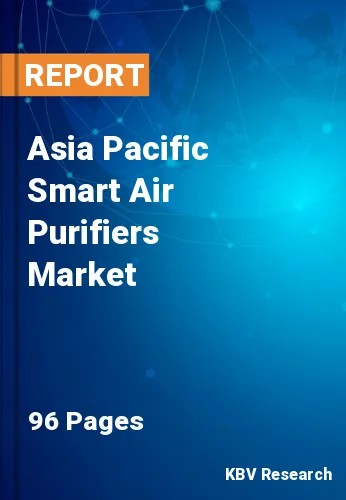The Asia Pacific Smart Air Purifiers Market would witness market growth of 8.8% CAGR during the forecast period (2022-2028).
The main advantage of a smart air purifier is that it allows customers to monitor and regulate indoor air quality as well as modify basic settings using their cellphones. Furthermore, as people become more conscious of the negative impacts of pollution on their health, more technology businesses are developing innovative air purifiers. Furthermore, the increased requirement to eliminate tiny airborne particles and germs in commercial areas, workplaces, and residences, including living rooms, bedrooms, kitchens, and bathrooms, is driving the demand for smart air purifiers.
In India, air pollution is a major health concern. In 2019, India had 21 of the world's 30 most polluted cities. According to a study based on 2016 statistics, at least 140 million people in India inhale air that is 10 times or more polluted than the WHO acceptable limit, and India is home to 13 of the world's 20 cities with the highest annual air pollution levels. Industrial pollution accounts for 51% of pollution, whereas automobiles account for 27%, crop burning accounts for 17%, and miscellaneous sources account for 5%. Every year, 2 million Indians die prematurely as a result of air pollution. Emissions come from automobiles and industry, but biomass burning for cooking and heating is a major source of pollution in rural regions.
Large-scale crop residue burning in agriculture fields — a cheaper option as compared to mechanical tilling – is a major source of smoke, haze, and particulate pollution in the autumn and spring months. Despite its low per capita greenhouse gas emissions, India is the world's third-largest emitter of greenhouse gases, trailing only China and the United States. According to a 2013 research on non-smokers, Indians had 30 percent lower lung function than Europeans. The Air (Prevention and Control of Pollution) Act was passed in 1981 to regulate air pollution, however, due to lax enforcement, it has failed to reduce pollution.
The China market dominated the Asia Pacific Smart Air Purifiers Market by Country in 2021, and would continue to be a dominant market till 2028; thereby, achieving a market value of $600.2 million by 2028. The Japan market is anticipated to grow at a CAGR of 8.2% during (2022 - 2028). Additionally, The India market would showcase a CAGR of 9.5% during (2022 - 2028).
Based on Technique, the market is segmented into High-efficiency Particulate Air (HEPA), Activated Carbon Filtration, Thermodynamic Sterilization System (TSS), Ultraviolet Germicidal Irradiation, Ionizer Purifiers, and Others. Based on Product Type, the market is segmented into Fume & Smoke Collectors, Dust Collectors, and Others. Based on End User, the market is segmented into Residential, Commercial, and Others. Based on countries, the market is segmented into China, Japan, India, South Korea, Singapore, Malaysia, and Rest of Asia Pacific.
Free Valuable Insights: The Worldwide Smart Air Purifiers Market is Projected to reach USD 8.4 Billion by 2028, at a CAGR of 7.9%
The market research report covers the analysis of key stake holders of the market. Key companies profiled in the report include Dyson Limited, Honeywell International, Inc., Xiaomi Corporation, LG Electronics, Inc. (LG Corporation), Koninklijke Philips N.V., Sharp Corporation, Unilever PLC, Coway Co., Ltd., and Levoit (Vesync Co., Ltd.)
By Technique
By Product Type
By End User
By Country
Our team of dedicated experts can provide you with attractive expansion opportunities for your business.

